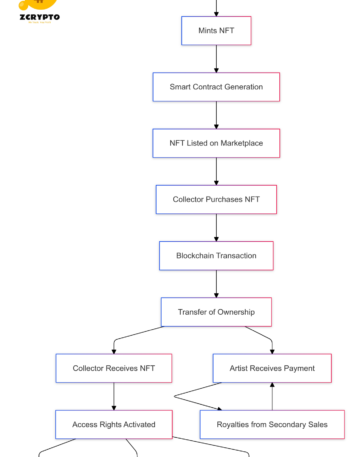The Economic Recovery Tax Act of 1981 (ERTA) was a landmark legislation signed into law by President Ronald Reagan on August 13, 1981. Sponsored by Congressmen Jack Kemp and William Roth, this act was part of a broader economic strategy aimed at stimulating economic growth through significant tax cuts and other fiscal measures. Enacted during a period of high inflation and stagnant economic growth, ERTA marked a significant shift in U.S. economic policy, embracing supply-side economics and the theories of economists like Arthur Laffer.
- How the Dow Jones CDX Revolutionizes Credit Risk Management and Investment Strategies
- Understanding the Five-Year Rule: A Comprehensive Guide for Investors and Financial Planners
- What is NFC? A Technical Guide to Near Field Communication Technology
- Create a Comprehensive Financial Plan: Ultimate Guide for Secure Investments
- Unveiling the Enron Scandal: What Happened, Who Was Responsible, and the Lasting Impact on Corporate Finance
Background and Legislative History
ERTA was born out of the economic malaise of the late 1970s, characterized by high inflation, rising unemployment, and sluggish economic growth. The legislative process was influenced by the Laffer Curve, which suggested that reducing tax rates could increase government revenue by encouraging economic activity. The bill faced considerable opposition but ultimately passed with bipartisan support.
Bạn đang xem: Understanding the Economic Recovery Tax Act of 1981 (ERTA): Impact on Taxes, Investments, and Economic Growth
The legislative journey involved intense lobbying and negotiations. Key figures such as Arthur Laffer, who advocated for lower tax rates to boost economic activity, played crucial roles in shaping the bill. The final version incorporated many of the principles of supply-side economics, aiming to stimulate investment and consumption.
Key Provisions of ERTA
Individual Income Tax Provisions
ERTA introduced substantial reductions in individual income tax rates. The top marginal tax rate was reduced from 70% to 50%, while the bottom bracket decreased from 14% to 11%. Additionally, the act introduced inflation indexing of tax brackets, ensuring that taxpayers would not be pushed into higher tax brackets due to inflation. Other benefits included increased estate tax exemptions and reduced capital gains taxes.
These changes were designed to increase disposable income and encourage consumer spending and investment. By reducing the highest tax brackets, ERTA aimed to incentivize work and entrepreneurship.
Business and Investment Provisions
One of the most significant provisions of ERTA was the introduction of the Accelerated Cost Recovery System (ACRS). This system allowed businesses to depreciate assets more quickly, thereby increasing depreciation deductions and reducing taxable income. This change was intended to boost business capital investment by making it more cost-effective for companies to invest in new equipment and facilities.
Other business-friendly provisions included the expansion of employee stock ownership plans (ESOPs), which allowed companies to offer stock to employees as a form of compensation. The act also expanded investment tax credits and modified the treatment of real property, further incentivizing investment in real estate.
International and Special Provisions
ERTA also included several international and special provisions. For instance, it introduced an earned income exclusion for U.S. citizens working abroad, as well as a tax exclusion of housing costs for expatriates. Special provisions were made for distressed industries, aiming to provide relief and support during a challenging economic period.
These provisions were designed to make U.S. businesses more competitive globally and to provide targeted relief where needed.
Economic Impact and Controversies
Immediate Economic Effects
In the immediate aftermath of ERTA, there were mixed economic effects. Business capital investment saw a significant boost due to the accelerated depreciation rules and other business incentives. However, the federal deficit began to rise as tax revenues decreased. The Federal Reserve’s monetary policies during this period also played a crucial role in managing inflation and stabilizing the economy.
Xem thêm : How a Flat Tax System Works: Simplifying Income Taxation for Individuals and Businesses
Consumer spending increased as disposable income rose, but unemployment rates remained high initially before starting to decline. The overall impact was complex, with some sectors experiencing immediate benefits while others took longer to respond.
Long-Term Economic Effects
In the long term, ERTA is often credited with contributing to the robust economic growth of the mid- and late 1980s. The economy rebounded strongly, with lower unemployment rates and increased economic activity. However, there is ongoing debate about whether the tax cuts were the primary cause of this growth or if other factors such as monetary policy and technological advancements played more significant roles.
Critics argue that ERTA exacerbated wealth inequality by disproportionately benefiting high-income earners. Supporters counter that the increased economic activity and job creation benefited all segments of society.
Fiscal Impact
The fiscal impact of ERTA was significant. The reduction in tax revenues led to a substantial increase in the federal budget deficit, with the U.S. national debt tripling during Reagan’s presidency. In response to these rising deficits, subsequent legislative actions such as the Tax Equity and Fiscal Responsibility Act of 1982 were enacted to address the fiscal imbalance.
Despite these challenges, proponents argue that the long-term economic benefits outweighed the short-term fiscal costs.
Nguồn: https://staredecisis.quest
Danh mục: Blog





